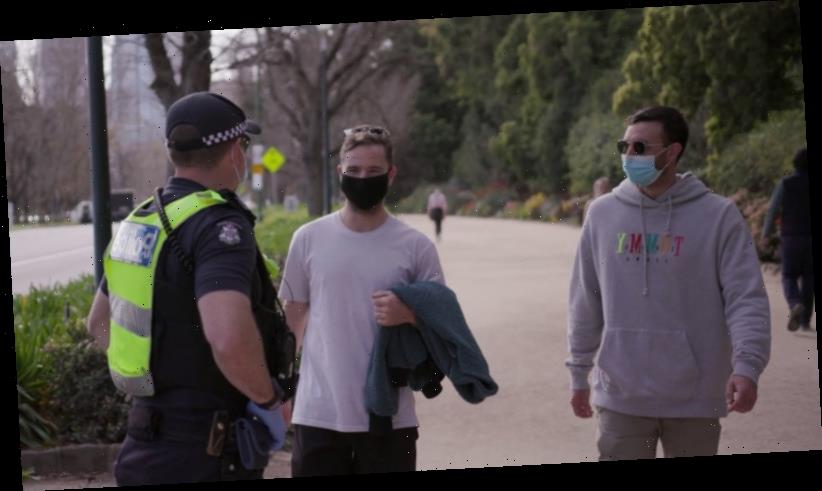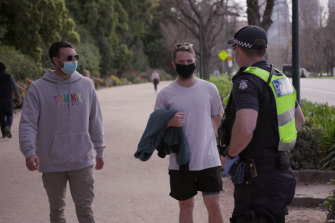For most Australians, the concept of learning to live with COVID-19 involves curtailing daily movements, reducing contact with extended family and friends and establishing routines to ensure we are cutting the risk of exposure to and spreading of the virus.
But for thousands of others, the prospect of many more months or even years of increased isolation is debilitating. It’s not just the increased loneliness, vulnerability and adverse impacts to regular support networks; there are also very real threats to job security for thousands for whom work is not only a financial lifeline but a safe haven.
We are at a crucial point in the pandemic where presence of mind and consideration of others is paramount.Credit:Police Media
On the back of a surge in demand, Victoria’s Premier Daniel Andrews on Sunday announced an extra $60 million of mental health funding to reduce pressure on hospital emergency departments as well as increased counselling services for nurses and other healthcare workers who are in the eye of the storm.
That takes the total mental health spending in Victoria since March to $190 million and follows the federal government’s announcement this week of a further $12 million injection into mental health services such as Headspace, Lifeline, Beyond Blue and Kids Helpline. The NSW government has announced additional mental health spending of more than $80 million since the start of the pandemic, which included 180 additional specialists, community-based mental health clinicians and peer support workers. NSW has already invested in a $700 million mental health infrastructure program across the state.
It’s hard to emphasise how important this money is to meet the need for support across the community. We have anxious teenagers doing their final year exams amid lengthy periods of remote learning as well as misbehaviour and conflict between younger students who are struggling to process the masks, stress and disruption to their lives.
Our attempts to reduce the appalling rates of suicide in this country have failed miserably. Some 3046 Australians committed suicide in 2018, and 41 per cent of those were outside major city areas. It’s horrifying to consider how those figures will look for 2020.
In regional and rural areas, the pandemic comes on top of years battling crippling drought, many businesses and livelihoods left in ruins by the horror bushfire season last summer. Some estimates suggest there could be a 25 per cent increase in suicide rates in those areas. That’s before you even consider that for every death by suicide, as many as 30 others attempt to end their lives, leaving individuals and their loved ones permanently scarred.
Support services are coming under increasing demand in Victoria since its return to stage four lockdown conditions, while there is simmering anxiety in NSW about what the future holds. Fear of having to return to lockdown if a hitherto undetected caseload is revealed may on the one hand fuel our vigilance but is adding further weight to already-heightened levels of stress about the future of the economy.
But it’s important to note the situation is not hopeless. We are living through a painful and protracted work-in-progress together, all 26 million of us. All levels of government are highly engaged in ensuring people are not only supported financially but also emotionally through the provision of these vital mental health services.
The Age urges people to call on the services available and support each other through this unprecedented period. We need all the patience, kindness and presence of mind we can summon.
If you or anyone you know needs support, call Kids Helpline 1800 551 800, Lifeline 13 11 14, Mensline 1300 789 978 or Beyond Blue's coronavirus mental wellbeing support service on 1800 512 348.
Source: Read Full Article

